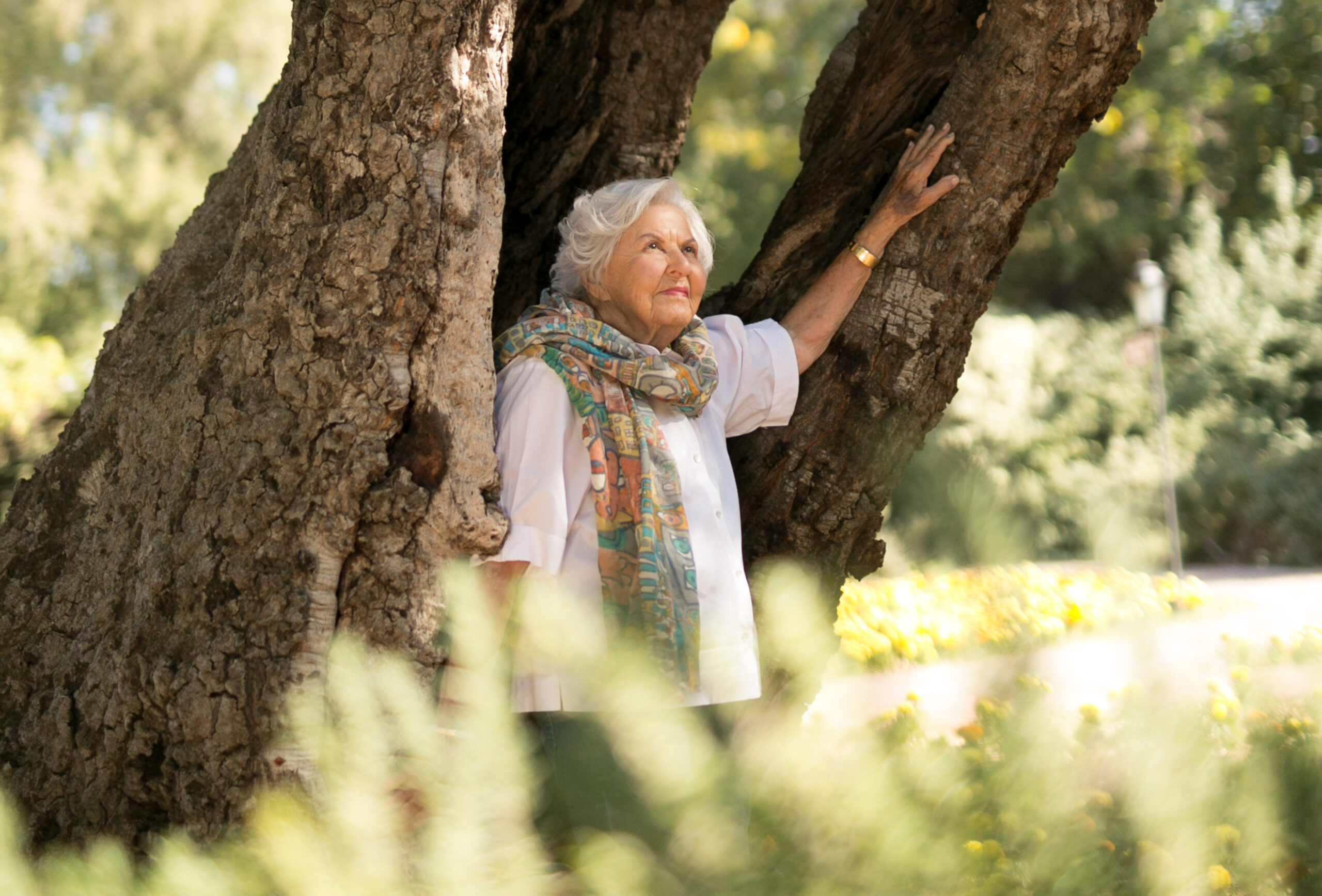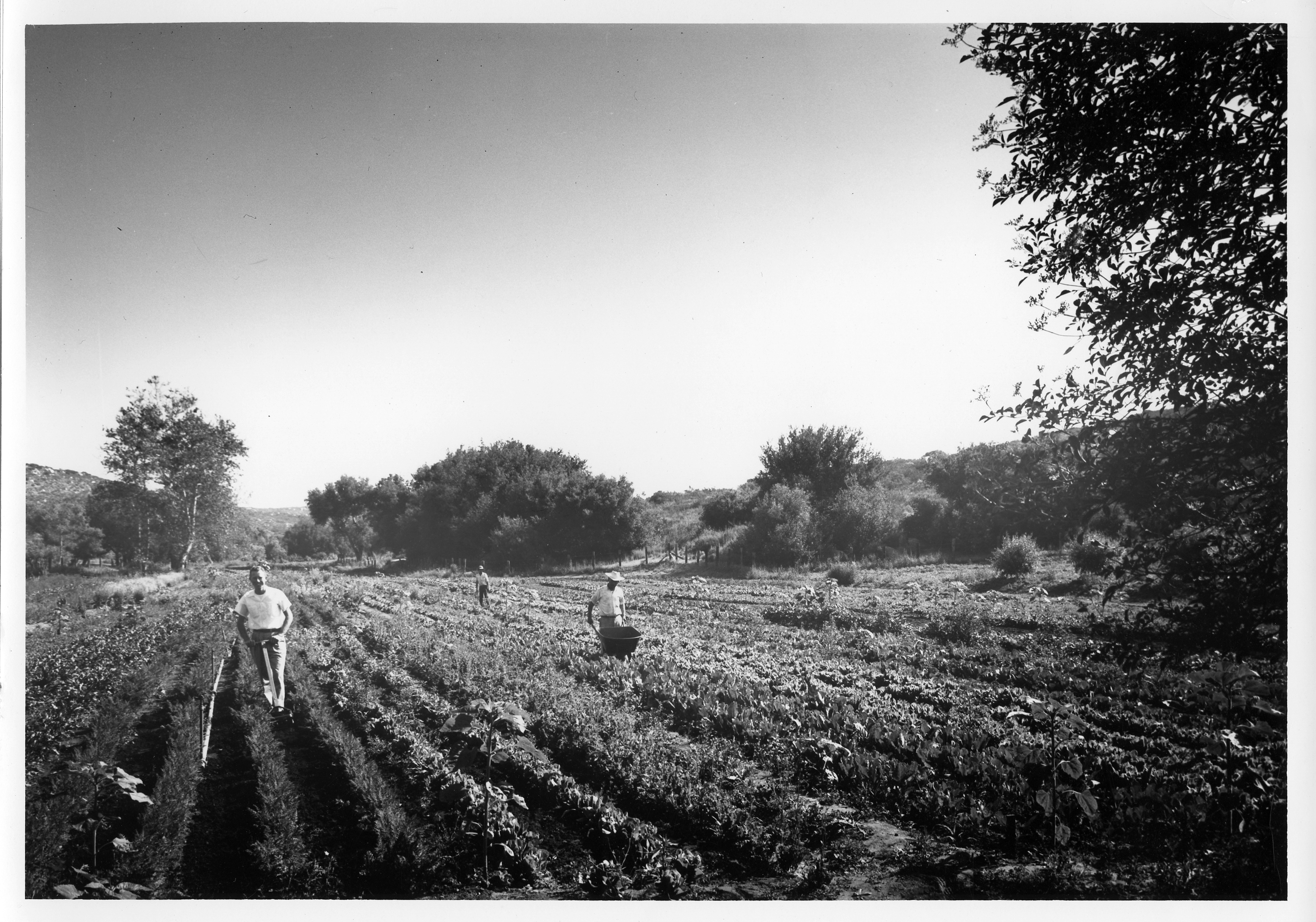Origins of the Ranch, Part XVI

“A healthy ecosystem is a treasure beyond measure”—A recounting of Rancho La Puerta’s extraordinary measures to preserve large areas of Mt. Kuchumaa’s wild lands for more than just the great pleasure of our hikers…
It was long Rancho La Puerta’s dream, spearheaded by Sarah Livia (Szekely) Brightwood, daughter of Ranch co-founders Edmond and Deborah Szekely, to formalize protection of Mt. Kuchumaa (also known as Tecate Peak on the U.S. side). Guests have known this mountain well since the first group arrived in June, 1940: their footsteps have explored it on hikes, their senses have experienced the abundant nature here time and again, and their hearts and souls have surely absorbed its spirit.
At Rancho La Puerta, in a hallway between the Lounge and Concierge offices, you will still find a certificate honoring the mountain’s inclusion on October 22, 1992, in the U.S. Bureau of Land Management’s (BLM) National Registry of Historic Places. This was the auspicious beginning to a movement that resulted in a coalition of public and private partners meeting at the Ranch beside Kuchumaa Passage in 2003 to formalize protection of the sacred mountain and its foothills—on both sides of the border.
At the ceremony, Kumeyaay tribe members chanted, and Roberto Zambrano, President of Pronatura, stated, “Ecosystems don’t have borders; they were designed by God.”
“This is comparable to Mt. Sinai for the Israelis,” added Stan Rodriguez, a Kumeyaay from Santa Ysabel. Reporter Sandra Dibble of the San Diego Union/Tribune also reported that Flavio Cházari Ramirez, a top official of Mexico’s National Commission for Protected Areas, said, “The Mexican government can’t do everything, and it cannot be done alone.”
Here is Sarah Livia’s keynote address, a lovely piece that draws on her skills not only as an environmental activist but also writer, poet and artist:
* * *
“We are here to celebrate a solemn commitment between Fundación La Puerta and Pronatura to work together for many generations. But much more than that, we are here to honor and celebrate our commitment to the Earth. This commitment isn’t notarized in legal offices. It lives within every cell of our body. It is our blood, our bones, our breath… We acknowledge that we are deeply dependent on the Earth’s biological systems and that these systems are so magnificently complex that we are only just beginning to comprehend them. A healthy ecosystem is a treasure beyond measure.
My parents arrived in Tecate, a small village in a beautiful valley, in the winter of 1940. When I was born in the 1950s there was no electricity for miles and the nights were resplendent with stars. A rippling river of sound carried me to sleep—frogs, coyotes and crickets singing together until a joyful crescendo of roosters, sparrows and farm dogs called up the sun.
Many of us living along the border are bilingual and bicultural. Before I spoke Spanish and long before I learned English in school, I learned the language of the Earth, my maternal tongue. The Earth continues to speak to us throughout our lives by calling to our senses, but every day we hear less and less. Which quiet moments prevail when there is so much noise, so much hurry, and so much stress? Do we pause to honor the timeless and wholly satisfying communion of the smell of sage after a rain, the whisper of leaves stirred by the breeze, and the warm embrace of spring sunlight?
Consider what type of culture springs from a battered mother who has been abused and degraded; a desperate culture, impoverished in heart and soul, a culture of fear and scarcity. How can it be possible for a single generation to squander the future of all humanity? We cannot deny that this is the reality being created daily today.
We need tools with which to balance chaotic and shortsighted development—tools as varied and diverse as the biological communities that surround us. A conservation easement is one such tool for the private landowner. It creates synergistic relationships between previously disconnected properties. It can help to coordinate ecological management strategies, and most importantly, it bestows protection from development.
We are the first to implement this model of private conservation in this area. The interest it has generated on both sides of the border pleases us enormously, especially the participation of our neighbors the BLM and the California Department of Forestry. Our agreement augments their commitment to preserve Mt. Kuchumaa, and they now become immediate beneficiaries of this easement. In this way, our 2,000 acres effectively become 6,000 acres, preserving a considerable part of this mountain; a beloved and sacred place and a critical wildlife corridor in our watershed.
This is but one step, and there are many more that we must take together—designing partnerships of creativity and commitment that demonstrate models of sustainable development.
Our commitment to Kuchumaa is to protect its symphony of life, its voice, its teachings, and its dreams so that a primordial language may be heard by our children’s children—so that a sense of belonging to something beautiful and incorruptible will be forever part of their soul.
In closing, I especially wish to thank Pronatura: its Advisors, Directors, and staff in Ensenada and Mexico City with whom we have traveled this rewarding path. And finally I wish to thank all those in the public and private sector that join us in our work to make this region a model of conservation and sustainability.
Next month: The Aldous and Laura Huxley connection with Rancho La Puerta…


